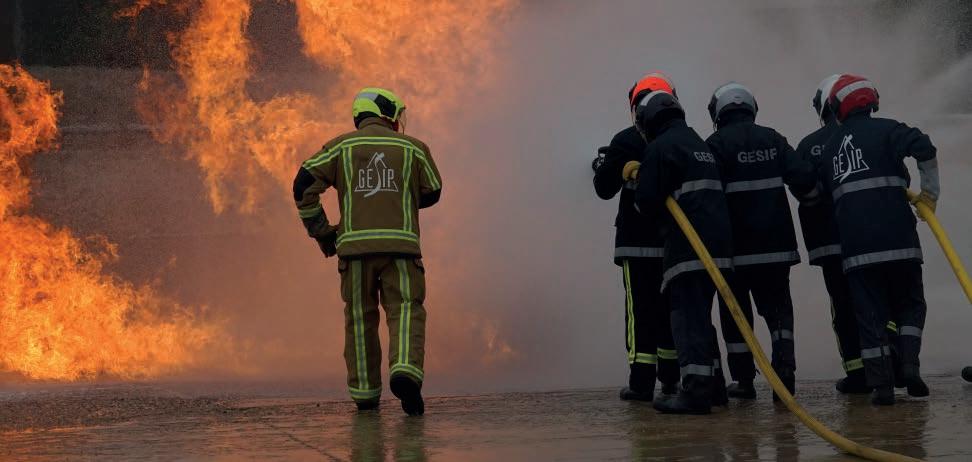
2 minute read
How Condensed Aerosol Works On Extinguishing Lithium Polymer Battery Fires
by Catalyst
HOW CONDENSED AEROSOL WORKS ON EXTINGUISHING THE LITHIUM POLYMER BATTERY FIRES
The condensed aerosol technology came into prominence in the firefighting industry, following the Montreal Protocol in 1987 and the Clean Air Act of 1990 on Ozone depleting substances that banned the use of Halon 1301, which was the most widely used fire extinguishing agent at the time.
Advertisement
The use of condensed aerosols is gradually rising with the implementation of International standards such as NFPA2010, UL2775, EN15276 and ISO15779 International standards and due to their compact nature with low maintenance, they are finding good use in both conventional and unconventional applications.
Condensed aerosols produce a relatively high surface to mass ratio of micro-sized potassium-based particles suspended in a mixture of inert gases (this is referred to as the gaseous aerosol) that rapidly floods the protected area and the chemically reacts with the fire free radicals on a molecular level.
The most used electrolyte in Li-ion cells contains lithium hexafluorophosphate salt (LiPF6) which is highly flammable and undergoes thermal decomposition when exposed to increased temperatures. The decomposition of LiPF6 is promoted by the presence of water or humidity, according to the following reactions:
The chemistry behind the extinguishing action of condensed aerosols and how they assist to reduce the amounts of toxic gases released from a Li-ion thermal runaway is based on the following: (When heated in a dry and inert atmosphere) LiPF6→ LiF(s) + PF5(g) (In the presence of moisture/water, PF5 further reacts to form POF3 and HF) PF5+ H2O → POF3(g) + 2HF(g) (When heated in normal atmosphere in presence of moisture/water) LiPF6 + H2O → LiF(s) + POF3(g) + 2HF(g)
Extensive research has been carried out to eliminate the amount of HF or to further neutralize it with alkaline materials.
Fire extinguishers that contain aqueous solutions of metal salts have proven to be effective, through a mechanism where the metal ions bind to the HF gas molecules to form stable solid metal fluorides. [1] Considering K-type aerosols, both the active agent K2CO3 and KOH intermediate product can react with HF to form stable products, according to the below reactions which as a result will cause the ambient temperature to fall below the threshold temperature 120°C, needed to sustain the thermal reactions within the Li-ion cell.
K2CO3 + 4HF → 2KHF2(s) + CO2 + H2O KOH + HF → KF(s) + H2O Post discharge the condensed aerosol Active Agent remains within the enclosure for at least 30 minutes preventing any re-ignition. This is due to the characteristics of the potassium salts that can chemically neutralize and provide stability to the atmosphere and a potential thermal runway event. Each aerosol brand is different in terms of chemical composition of the solid aerosol forming compound and condensed aerosol generator design so every manufacturer should conduct a series of test(s) on Li-ion cells to justify replicable performance results and test scenarios reflecting realistic fire scenarios in order to define the appropriate design density.
[1] Patent No.: US20120312562A1, Method for fighting and/or preventing fires in lithium-ion cells and lithium-ion polymer cell.
Rajesh Sabadra – Executive Director KV Fire Chemicals (India) Pvt. Ltd.
Kamala Niwas, Plot No.32, Lane-D, Sector-8, Vashi, Navi Mumbai-400703
Mob No: +91-9820342062 Tel No: +91-22-27820827 Fax No: +91-22-27824712
rajesh@kvfire.com www.kvfire.com









